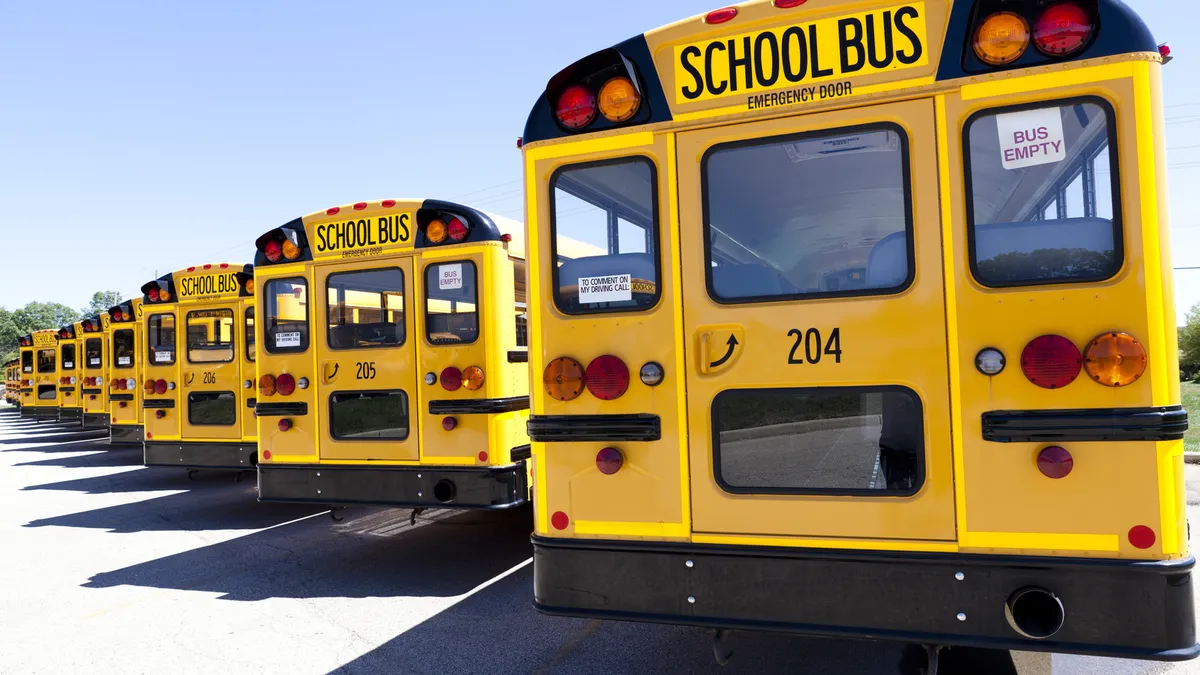It’s mid-summer, the time of baseball’s All-Star Game, Shakespeare in the Park, and tan lines. But for retailers, it’s time for back-to-school sales to launch in earnest.
This year, despite some tepid retail sales growth in general, the back-to-school season could be more brisk than it has in some time, experts say.
The Outlook this Year
The National Retail Federation predicts that parents with schoolchildren will spend a bit more on back to school this year, $669.28, compared to last’s year’s $634.78, an increase of 5%. And spending pressure by school districts will prompt some households to contribute certain supplies to classrooms. But overall, the total will likely drop to $26.5 billion with fewer kids heading to school this year.
Households sending off college kids will be heavy spenders — shelling out $916.48 on average on dorm supplies like furniture, school supplies, electronics, and other things, a increase of 10% from last year’s $836.83. Bed Bath and Beyond and Target both have college gift registries available for those looking to receive some of the college essentials as graduation gifts.
Timing back-to-school sales
Last year, the retail back-to-school season began well before July 4. Sales then were estimated to reach a healthy $72.5 billion (including back-to-college spending, which includes many home goods), but consumers were showing reluctance to buying for back to school, as many were dealing with an increased payroll tax and other economic pressures. Retailers, grappling with these factors and still stung from the recession, were eager to grab consumers’ limited dollars before their wallets dried up.
But, while back-to-school spending is expected to go up this year, last year’s early start didn’t sit so well with shoppers. In fact, people will likely be pushing their spending to later than usual this year, according to the NRF's estimates.
Still, it’s a long, flexible season. Back-to-school retail promotions should be ready in June, peak in August, and keep going into September, some experts say.
Supplies vs Apparel (and Home Goods)
A good 11% of parents shop for pens, pencils, and backpacks after school starts, according to research by Placed Insights that measured consumer behavior for back-to-school shopping. Office supply retailer Staples says that back-to-school spending is a major contributor to its sales into the fall, which shows how fluid the end of the back-to-school season is compared to the holidays.
This year, teenagers and their parents appear to be in even less of a hurry to freshen up their closets with new clothes. Fast-fashion may have taught teenagers that they can shop for trends more in the moment, at any time of year, rather than stocking up in August with items they may not even want later. Many states are helping boost back-to-school apparel sales by instituting a temporary sales tax holiday on clothes.
In general, the National Retail Federation expects a healthy use of coupons and promotions, and something of a reluctance to buy and “make do” with last year’s things. One recent Gallup poll has similarly found that 45% of U.S. consumers say their spending on everyday essentials is up, compared to last year, putting a damper on spending on less necessary things.
The one predictably bright spot in back-to-school retail looks to be the sale of home goods for the college-bound student. While the outlook for items from apparel to pencils is weak, rising only 3.2% in July due in part to rising food and gas costs, consumers seem more willing to buy things for the home and dorm room, according to research by retail consulting group Customer Growth Partners.
What’s going on at West Coast ports
Back-to-school items are among those that are coming to U.S. shores via ships that dock on the West Coast. Retailers like Wal-Mart Stores, Target, Amazon, and others, as well as their suppliers, are increasingly worried that dockworkers haven’t had a contract since June 30. So far, retailers say the minimal extra costs as a result have already been incorporated into consumer prices, so there should be little worry of price spikes.
Still, 20,000 workers at the affected West Coast ports bring some 40% of goods shipped into the U.S. Any breakdown of the ongoing negotiations could put a major dent into supply chains just when goods should be coming in for peak need times of the back-to-school and holiday seasons.
Is the impact of back-to-school overstated?
Evidence compiled by the Pew Research Center has found that the economic value of the back-to-school season may indeed be overstated for retailers. One reason for that is that back-to-school spending simply displaces other spending (including, possibly, holiday sales) that would have taken place, if not for the purchase of that new backpack or shoes.
Would you like to see more retail news like this in your inbox on a daily basis? Subscribe to our Retail Dive email newsletter! You may also want to read Retail Dive's look at how augmented reality is changing the future of retail.





















